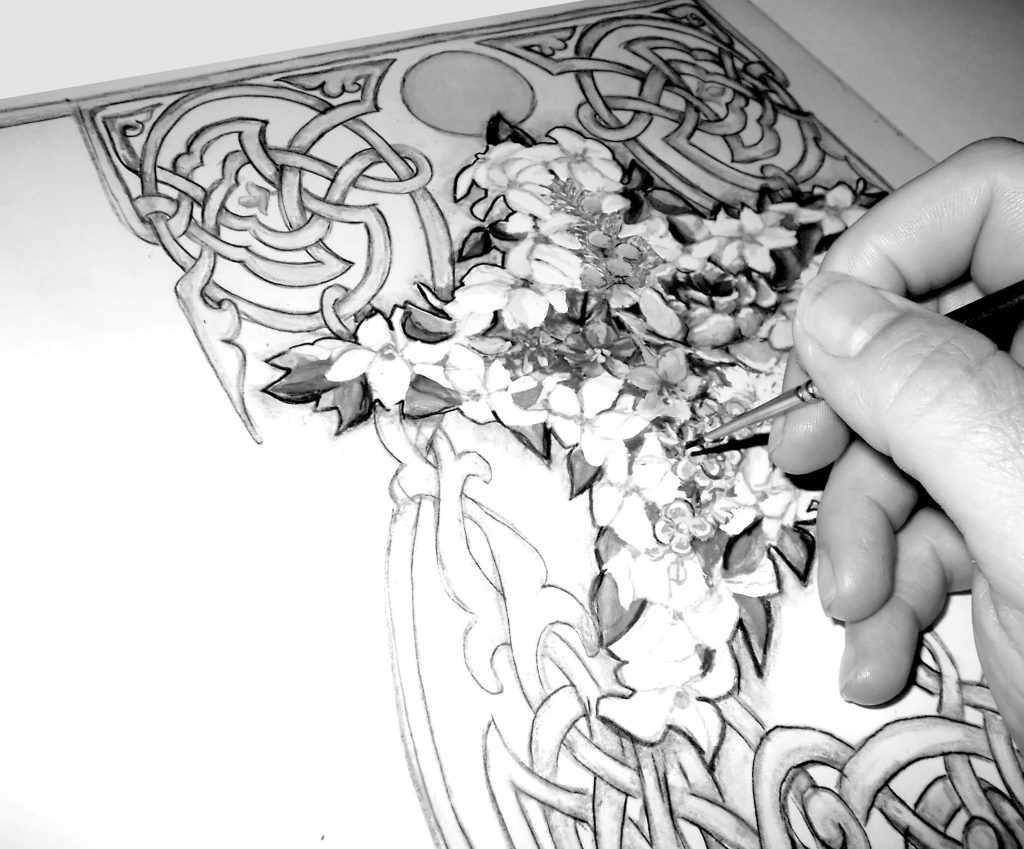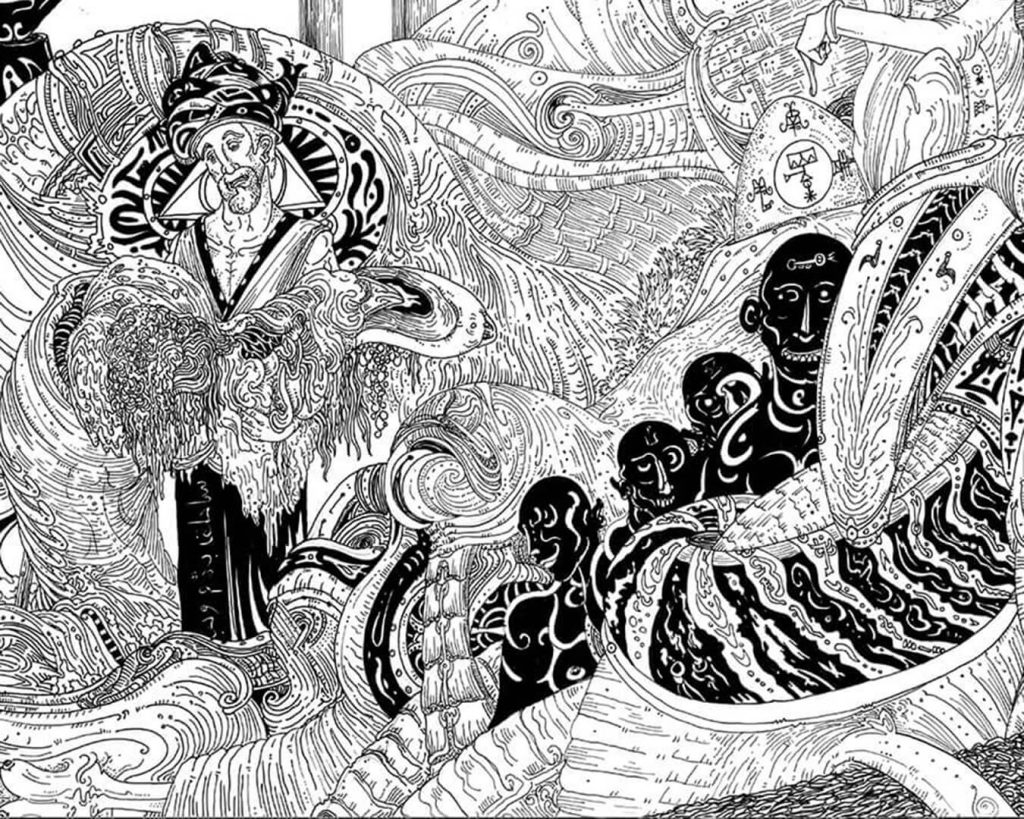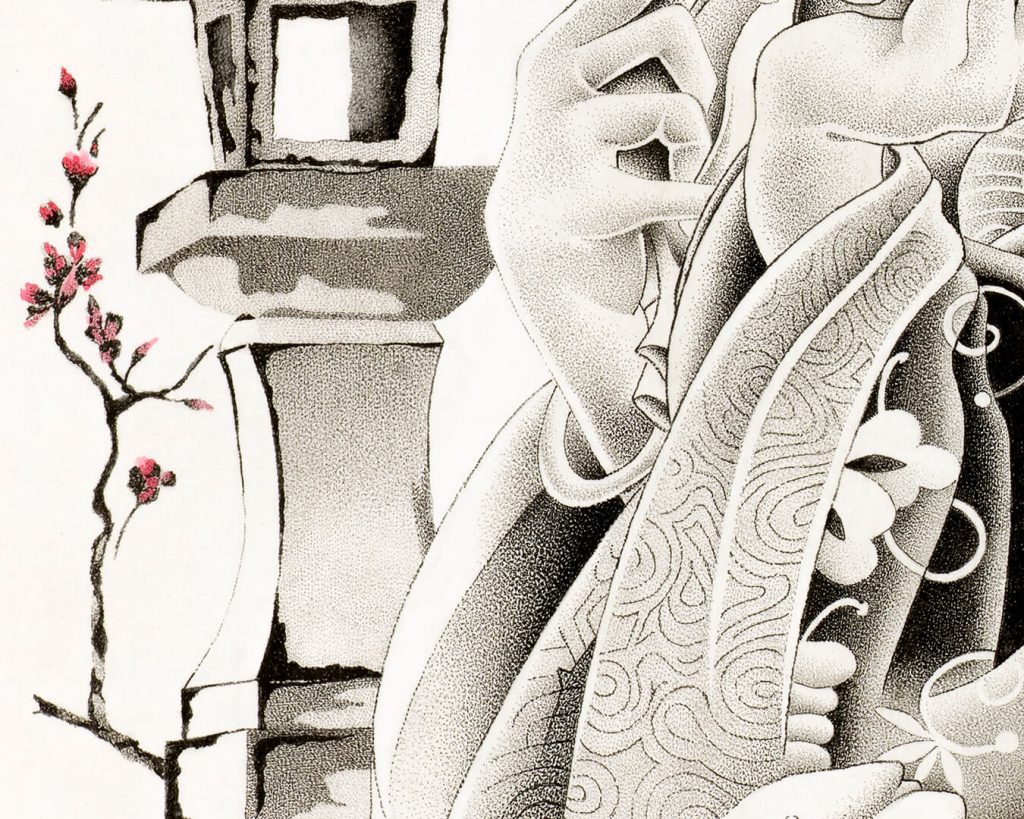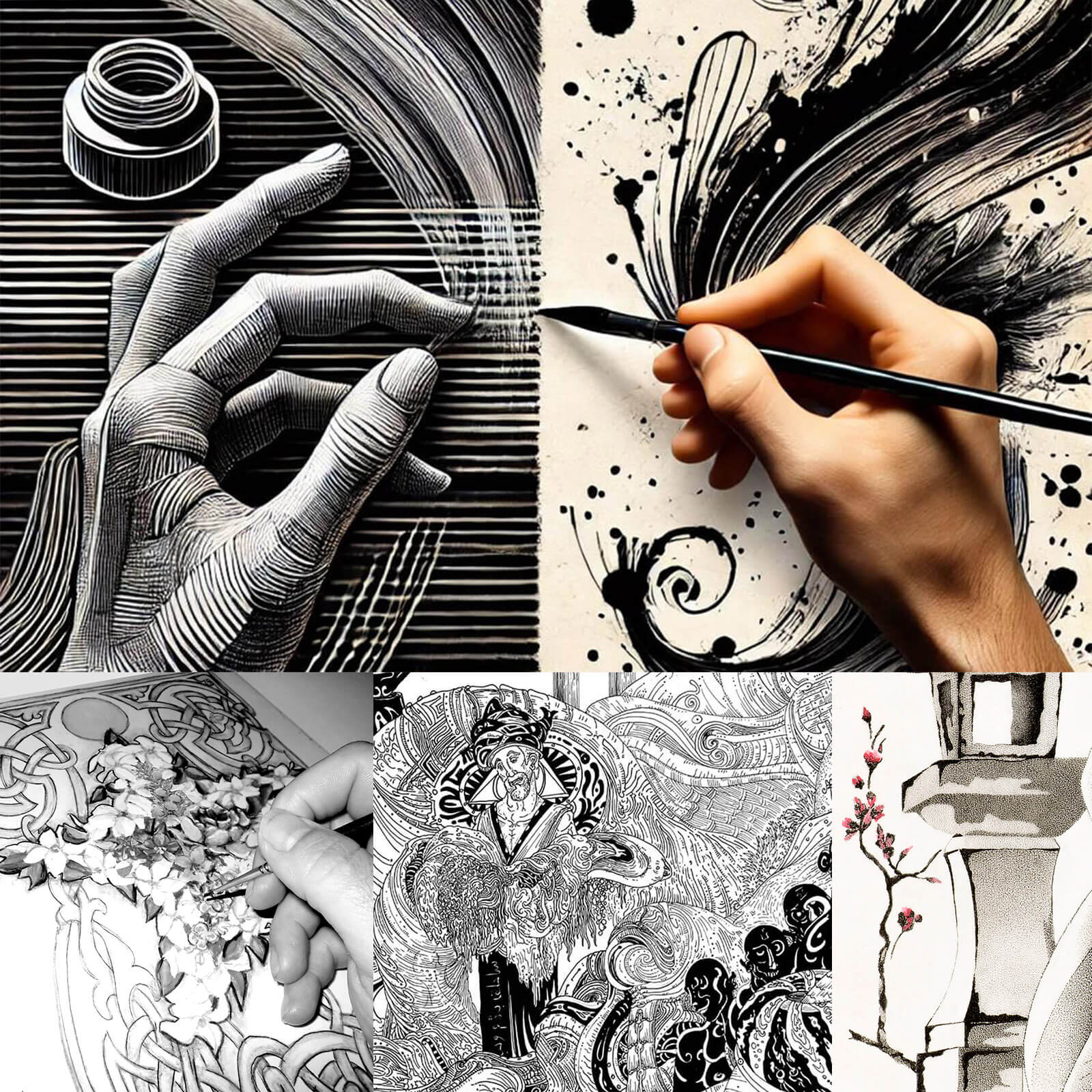The speed at which the artist’s hand moves when using ink directly affects the final result, determining the style and expressiveness of the work. The relationship between controlled and spontaneous expression shapes different aesthetic outcomes, influencing the composition’s dynamics and the mood it conveys.
Controlled expression is characterized by slow, steady, and deliberate movements. This technique requires planning and concentration, as each line or stroke is carefully designed to achieve the desired result. In calligraphy, for example, precision in hand speed is essential for creating clean and harmonious characters. Similarly, in detailed illustration or stippling, steady and slow motion ensures an even distribution of dots or lines.
Spontaneous expression relies on fast, free, and unforced hand movement, allowing the ink to flow naturally. This approach is often used in abstract works, in sumi-e painting, and in techniques such as dripping and splattering, where speed brings immediacy and energy to the composition. The result is more fluid and dynamic, incorporating elements of chance and surprise.
The choice between controlled and spontaneous expression depends on the artist’s intention and the goal of the work. The two approaches can be combined, achieving a balance between precision and freedom, creating works that capture both discipline and a sense of movement and vitality.

Maria Genitsariou
The hand (and the artwork being painted during the photoshoot) belongs to the renowned Greek calligrapher and member of our community, Maria Genitsariou… Discover more HERE.
Elias Kasselas
Detail of a work by Ilias Kasselas, shown in magnification. As part of his participation in our community, he presented his unique approach to painting in an article, focusing on his technique of “automatic painting” and explaining how it functions. It’s well worth reading — you can view it HERE.


Dimitris Galanakis
The absolute discipline of the hand in ink painting is present in many techniques and approaches, but one of the most outstanding is stippling. The image is a magnified detail from a work by Dimitris Galanakis, a member of our community and a well-known stippling artist. Even forms that appear to be painted freehand are, in fact, made up of dots that have been meticulously “tapped” by hand! And yet, this technique fundamentally relies on the “imperfection” of the human hand: the uneven spacing and irregularities of the hand-drawn dots make such works truly unique and highly collectible! Discover more about the artist HERE.






